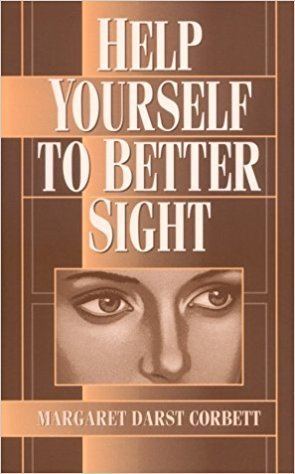Name Margaret Corbett | ||
 | ||
Books How to Improve Your Sight - Simple Daily Drills in Relaxation, How to Improve Your Sight | ||
Margaret Darst Corbett (January 17, 1889 – December 5, 1962) was an American vision educator who used the Bates Method for better eyesight. She became famous after her prosecution and acquittal on a charge of violating Californian law against the practice of medicine without a licence.
Contents
Life
Margaret Darst was born in Boston, Mass, January 17, 1889, the daughter of Edward Washington Darst and his wife Minnie Ann. During the First World War she was a yeoman first class in the US Naval Reserve. She married Daniel Lithgow Corbett, who died in 1930. She died in Los Angeles, December 5, 1962.
Methods and Teaching
Margaret Corbett met Dr. William H. Bates after consulting him about her husband’s eyesight. She became interested in his approach and became his pupil, and eventually taught his methods of vision education in her Los Angeles “School of Eye Education”.
The principles of her teaching may be summed up as follows:
”The purpose of the ... method is to teach activity under relaxed conditions by which the eye and mind co-ordinate normally, thus returning the function of seeing to the involuntary system, and permitting vision to take place. Relaxation, which is the secret of normal vision, should therefore be the basis of eye training. There are two types of relaxation:
- The sort you indulge when you are at rest, not attempting to use your eyes.
- The sort you must maintain habitually at your work while it is necessary for you to see rapidly and accurately.
After this habit of relaxed visual activity becomes automatic with you, the eye will grow keener and stronger with use, just as any other portion of the body, if used correctly, will improve in health and power. ... No athlete is good until he relaxes. Slow motion pictures of a good boxer or runner show that even though his working muscles may tighten for an instant to provide power, he is boxing or running while relaxed. This is largely the reason that athletes warm up, by slight exercise, before engaging in contests.”
Her specific techniques included the classic Bates method drills, such as sunning, shifting and swinging. She also, like Bates, placed great emphasis on mental drills, and one’s attitude to seeing. Amongst her many pupils was Aldous Huxley, who as a result of his education by Mrs. Corbett was inspired to write The Art of Seeing.
Prosecution and Acquittal
In late 1940 Mrs. Corbett and her assistant were charged with violations of the Medical Practice Act of California for treating eyes without a licence. At the trial, many witnesses testified on her behalf. They described in detail how she had improved their sight and had enabled them to discard their glasses. One witness testified that he had been almost blind from cataracts, but that, after receiving treatment, his vision had improved to such an extent that for the first time he could read for eight hours at a stretch without glasses. Mrs. Corbett explained in court that she was practising neither optometry nor ophthalmology and represented herself not as a doctor but only as an “instructor of eye training”.
The trial attracted widespread interest, as did the “not guilty” verdict. The optometrists and the ophthalmologists caused a bill to be introduced into the Californian State Legislature to make such vision education illegal without an optometric or medical licence. After a lively campaign in the media, the bill was defeated.
Criticism
Established optometrists and ophthalmologists continue to be unimpressed by Mrs. Corbett’s work. Speaking of her work, amongst others, Philip Pollack wrote
To anyone trained in the science of vision, the ignorance and the sheer absurdity of ideas explained in these books are appalling. The authors by-pass completely the discoveries and the experimental findings of such celebrated scientists and ophthalmologists as Helmholtz, Tscherning, Young, Maddox, Gullstrand, Donders, Duke-Elder, Fincham, etc. Their methods of treatment of defective vision and of diseased eyes are totally without value. ... The ideas of Bates and his disciples, far from being new, are a throwback to medieval habits of thought.
